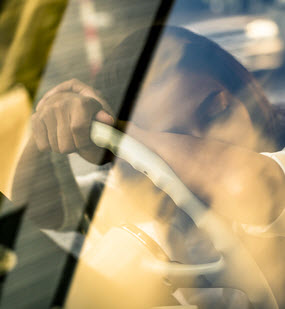Now that House lawmakers have rejected a last-ditch effort to delay the Electronic Logging Device rule, can a similar provision for passenger vehicles be far behind?
Since lawmakers voted down the ELD Extension Act of 2017 by a 246-173 count, the ELD rule will go into effect as scheduled in December 2017, absent an extremely unforeseen event. The courts have already declined to block the rule, as the trucking industry lost its final challenge in the Supreme Court in June 2017.
Opponents such as the Owner-Operator Independent Drivers Association view the ELD mandate as government meddling. They also cite concerns such as “enforcement, connectivity, data transfers, [and] cybersecurity vulnerabilities.” But these concerns have so far fallen on deaf ears, as the ELD rule has the backing of many safety advocates.
Electronic Evidence in Vehicle Collision Cases
Currently, truck drivers, bus drivers, and other large commercial vehicle operators are required to manually keep log books that detail their time behind the wheel, and also the time they spend at rest. But the ELD is automatic and tamper-proof. The device is connected to the engine, so when the vehicle is in motion, the ELD will reflect that the driver is engaged. Moreover, the drivers cannot alter the information on these devices.
As a result, if drowsy driving is suspected as a cause for a commercial vehicle crash, such fault will be much easier to establish.
Passenger vehicles have electronic evidence as well, most notably the Event Data Recorder. Like the ELD, the EDR is also connected to the engine and other important vehicle components, so the gadget captures and records a variety of crash-related metrics, including:
- Brake application,
- Engine RPM,
- Vehicle speed, and
- Steering angle.
Now that the ELD rule is poised to take effect, next-generation EDRs may track drowsy driving as well. Most states, and the federal government, have already passed EDR privacy laws which prohibit the dissemination of this information absent the owner’s permission or a court order, so privacy concerns are essentially nonexistent.
People who drive after eighteen consecutive hours without sleep are just as impaired as people who drive with a .08 BAC.
Another Effect
If electronic evidence is available in a vehicle collision case, it is easier for the victim/plaintiff to prove a case in chief, because unlike eyewitness testimony, it is almost impossible for the insurance company to legally challenge such evidence. So, these trials often involve a heavy focus on some other legal defenses, such as the contributory negligence rule.
There is a difference between fault and liability. Even if emergency responders assign “fault” to one driver, that driver may not be entirely liable for damages in court. For example, the tortfeasor may have been drowsy, but the victim might have been speeding.
If a judge allows it, the jury must divide fault between the victim and tortfeasor on a percentage basis. Different states have different rules that govern this process. Florida is among the handful of pure comparative fault states which divide damages based solely on the percentage of fault. So, in the above example, if the jury found that the tortfeasor was 50 percent responsible and the victim was 50 percent responsible, the victim would still receive 50 percent of the total damages.
Contact Aggressive Attorneys
Electronic evidence may tip the balance in car crash cases. For a free consultation with an experienced personal injury lawyer in Brandon, contact Reed & Reed. We have four area offices (St. Petersburg, Lakeland, Tampa, and Clearwater).
From our office in Brandon, Reed & Reed helps clients in Tampa, New Tampa, Plant City, East Hillsborough County and throughout the state of Florida.
Resource:
safetyandhealthmagazine.com/articles/16124-mandatory-eld-use-still-on-track-for-cmv-drivers-after-house-rejects-delay

